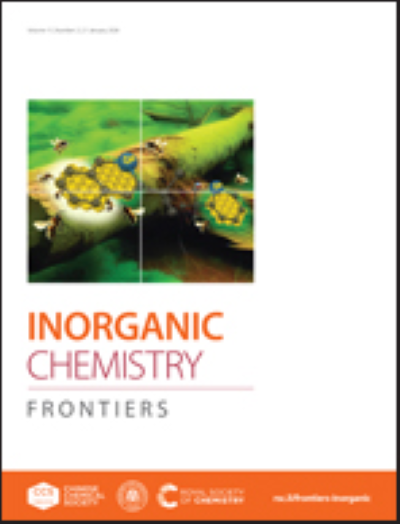环甲基化半三明治铱(III)和铑(III)配合物作为抗癌干细胞乳球的高效制剂
IF 6.1
1区 化学
Q1 CHEMISTRY, INORGANIC & NUCLEAR
引用次数: 0
摘要
本文章由计算机程序翻译,如有差异,请以英文原文为准。
Cyclometalated half-sandwich iridium(III) and rhodium(III) complexes as efficient agents against cancer stem-cell mammospheres
Four cyclometalated complexes, namely [IrCl(5-pentamethylcyclopendadienyl)(k2C-diphenyl(1-pyrenyl)phosphane)] (1) and [RhCl(5-pentamethylcyclopendadienyl)(k2C-diphenyl(1-pyrenyl)phosphane)] (2), and their DMSO-coordinated counterparts [Ir(η5-pentamethylcyclopendadienyl)(kS-dmso)(k2C-diphenyl(1-pyrenyl)phosphane)]PF6 (1·DMSO) and [Rh(η5-pentamethylcyclopendadienyl)(kS-dmso)(k2C-diphenyl(1-pyrenyl)phosphane)]PF6 (2·DMSO), were synthesized and fully characterized, including their single-crystal X-ray structures. DNA-interacting 1 and 2 exhibits IC50 values in the range 0.53–0.79 µM against bulk breast cancer cells and breast cancer stem cells (CSCs), i.e., HMLER and HMLER-shEcad cells. The complexes are up to seven times more active than salinomycin and up to nine times more active than cisplatin. Moreover, 1 and 2 are very effective (in the micromolar range) against mammospheres obtained from single cell suspensions of HMLER-shEcad cells, 1 being thrice more toxic than 2 and up to 4.5-fold more potent than cisplatin and salinomycin. In depth mechanistic studies revealed that 1 induces necrosis, which is potentially dependent on necrosome formation and independent of ROS concentration. The efficacy of 1 against breast CSCs can be enhanced by co-treatment with PARP-1 inhibitors.
求助全文
通过发布文献求助,成功后即可免费获取论文全文。
去求助
来源期刊

Inorganic Chemistry Frontiers
CHEMISTRY, INORGANIC & NUCLEAR-
CiteScore
10.40
自引率
7.10%
发文量
587
审稿时长
1.2 months
期刊介绍:
The international, high quality journal for interdisciplinary research between inorganic chemistry and related subjects
 求助内容:
求助内容: 应助结果提醒方式:
应助结果提醒方式:


